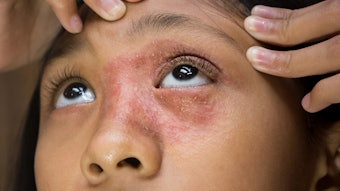
A February petition on Change.org successfully fought back against a recent claim that the American Academy of Dermatology's (AAD) Diversity, Equity and Inclusion (DEI) Initiatives is politically motivated and supports racial division. The petition was started by three female dermatologists, Wendy Roberts M.D., Jeanine Downie M.D. and Heidi Waldorf M.D., to combat the criticism and promote excellence and inclusion in dermatologic care.
The AAD advisory board voted to reject the resolution to remove the DEI initiatives and expand the academy’s mission to prioritize diversity and address inclusion issues within the field, per NBC News.
The proposed resolution reflects a larger fundamental issue of representation in dermatology and the tribulations that come with social progress.
Related: 6 Recent Insights Into Treatment Innovations for Skin of Color
AAD's DEI Initiative
AAD launched a DEI initiative in 2022 and operates a website dedicated to its objectives that lists many different diversity initiatives on local and national levels. One of the initiatives is its Diversity Mentorship Program, in which medical students from underrepresented groups team up with a dermatologist of their choice for a month of one-on-one mentorship.
The AAD DEI statement of intent states, “The Academy believes in creating a diverse and inclusive environment where all its members have opportunities that enable them to succeed and thrive and is committed to ensuring quality medical care for all our patients regardless of race, ethnicity, religion, gender or sexual orientation.”
The Proposed Resolution
The “Sunsetting all diversity, equity, and inclusion (DEI) programs" resolution, which is no longer available online, was introduced by Brian Raphael, M.D., a dermatologist in East Syracuse, New York. According to Raphael, the resolution links the “DEI movement” to antisemitism and claims DEI efforts have evolved into an unfair political movement that stifles “diversity of thought” and creates a “racist” or “nonracist” binary. The resolution was co-authored by dozens of AAD members looking to cease the DEI initiatives and programs implemented by the institution, per NBC News.
Doctors opposing the resolution requested specific examples of members experiencing antisemitism to be presented to the DEI committee and AAD board so that the issues could be addressed directly and corrected immediately. Skin disease in people of color is under-diagnosed, often goes untreated and is more deadly, due to a lack of experience and proper training in the differences presented in variable skin types.
“We celebrate diversity in all forms including, but not limited to, religious, ethnic, cultural, gender, and racial identities and aim to improve disparities in health care,” AAD president Terrence Cronin Jr. told NBC News. “We aren't opponents of any form of antisemitism, Islamophobia, anti-Asian hate and racism of any kind.”
Dr. Raphael said in a statement to Allure that the resolution wasn’t received in the way he intended.
Lack of Dermatological Literature on Skin of Color
A 2023 study revealed that skin disease in people of color is under-diagnosed, often goes untreated and is more deadly, due to a lack of experience and proper training in the differences presented in variable skin types.
Per the study, the 5-year survival rate is 66% for non-Hispanic/Black patients, compared with 90% for non-Hispanic Whites. The risk of surgical delay for melanoma was found to be increased in non-White patients. Nonmelanoma skin cancer (NMSC) in Black patients is uncommon with an incidence of 3.4 per 100,000, however, Black patients present with later-stage or more aggressive Squamous cell carcinoma (SCC).
Dr. Leon Clark, dermatology chief at Alameda Health System (AHS), was in residency training when he noticed Black patients coming in with treatable diseases that had gone untreated and undiagnosed. Patients said previous doctors had ignored their complaints. Dr. Clark suggests that those doctors likely hadn't been trained to identify diseases such as eczema in darker-colored skin. For most of history, medical students studying dermatology have been shown pictures of diseases on white skin only, leading to vast inequities in how skin of color is treated for skin disorders. Dr. Leon Clark, dermatology chief at Alameda Health SystemPhoto courtesy of Alameda Health System
Dr. Leon Clark, dermatology chief at Alameda Health SystemPhoto courtesy of Alameda Health System
"Someone who's not familiar with what that looks like in Black skin may say, 'Oh this is mild,'" Dr. Clark said. "It affects treatment in terms of how aggressively you treat it. I see it all the time, unfortunately."
According to data presented at the Maui Derm Hawaii 2024 conference in Wailea, Hawaii, there is a significant gap in the representation of sunscreen use in patients of color within medical literature. The presentation emphasized the urgency of increased research and awareness to ensure that diverse populations receive adequate attention in dermatological literature to reshape the discourse around sunscreen and photoprotection.
Per the report, from 1988 to 2022, approximately 4.35% of the total 5760 papers referencing sunscreen focused on patients with skin of color. Researchers noted that the majority of these papers emerged post-2007, with a substantial increase noted since 2014. As of June 2022, 21% of total sunscreen papers were dedicated to patients with skin of color, indicating a potential record-high for the year.
The report revealed a predominant focus on sunscreen knowledge and patient behaviors, while clinical trials were notably scarce. The breakdown by condition and ethnicity underscored variations in coverage, with American Indians and Pacific Islanders identified as particularly underserved.
Increasing Representation
Miranda Uzoma Ewelukwa, MD, FAAD, told Dermatology Times that The American Academy of Dermatology (AAD) remains a strong resource for education for skin of color. Dr. Ewelukwa also indicated that many local medical schools have the Student National Medical Association which primarily caters to skin of color medical students.
Dr. Ewelukwa said it is significant that dermatologists become involved in recruiting students from those organizations and including them in ways to teach dermatologists about those populations. There should also be more educational materials that show a variety of skin types and phototypes with certain conditions to improve training on diverse populations.











